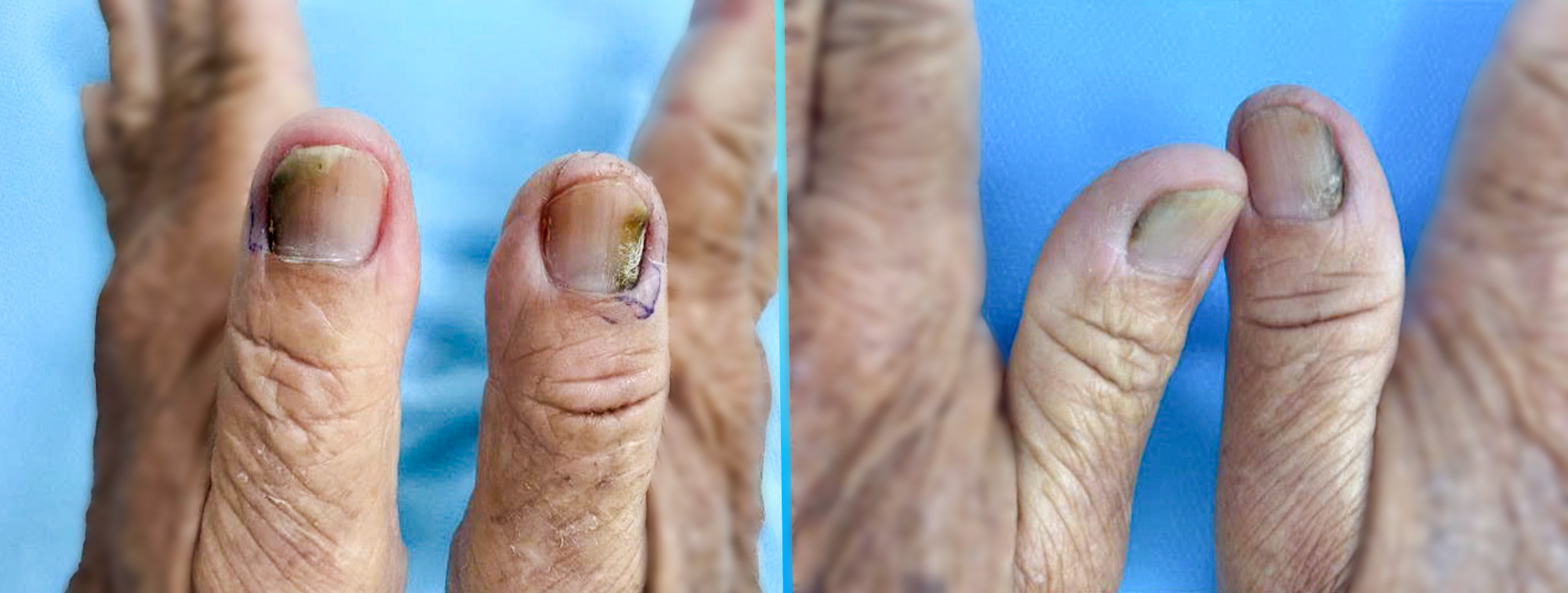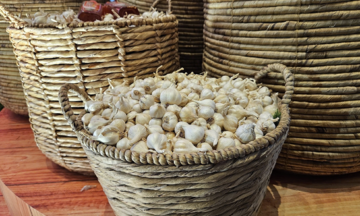For many years, Thanh used topical medications when his nails itched or peeled. In the past three years, the fungus worsened, spreading from a few fingers to almost both hands. When he arrived at Tam Anh General Hospital in Ho Chi Minh City, Dr. Dang Thi Ngoc Bich, Head of the Dermatology - Cosmetic Dermatology Department, observed yellowed, thickened, and deformed nails. Some nails were peeling, and the skin around the nails was red, swollen, painful, and itchy. These were typical signs of long-term, severe nail fungus.
Nail fungus is a dermatological condition caused by fungi. It often begins subtly and can spread rapidly between nails. While not life-threatening, it can lead to permanent nail deformity, spread to other nails, or infect family members who share personal items. In severe cases, nails can peel or cause pain upon impact, leading to self-consciousness and reluctance to interact socially.
 |
Thanh's fingernails begin to recover and appear more uniform after three laser sessions. Photo: Tam Anh General Hospital |
Dr. Bich prescribed a treatment plan for Thanh using a long-pulse Nd:YAG laser for 6-8 sessions combined with topical and oral medications. The long-pulse Nd:YAG laser uses light energy with a specific wavelength to eliminate fungal filaments and spores deep under the nail and nail bed, areas difficult for topical medications to reach. After three laser sessions, Thanh's pain and burning subsided, and his nails began to recover, becoming more uniform in color and growing normally without pus or inflammation.
According to Dr. Bich, treating nail fungus requires patience and adherence to the prescribed regimen, which often combines oral and topical medications with supporting technologies like laser therapy. Incorrect treatment or discontinuing treatment prematurely are the primary reasons for persistent and resistant infections. Many people, hesitant to seek medical attention, self-medicate, causing the disease to linger for decades.
 |
A doctor treats Thanh's nail fungus with a long-pulse Nd:YAG laser. Photo: Tam Anh General Hospital |
To prevent nail fungus, Dr. Bich recommends keeping fingernails and toenails dry, limiting prolonged contact with water or cleaning chemicals, and wearing rubber gloves when doing housework, removing them immediately after use. Nails should be trimmed neatly, avoiding cutting too close to the nail bed to prevent fungal entry. Sharing nail clippers, towels, or shoes with others should be avoided to prevent transmission.
If there are unusual signs such as discoloration, thickening, brittleness, peeling, or itching around the nails, individuals should consult a dermatologist. Those with a history of nail fungus should strengthen their immune system and practice comprehensive skincare to reduce the risk of recurrence after treatment.
Minh Huong
*Name has been changed












